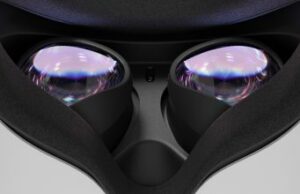Apple is going all-in with hand-tracking for its upcoming Vision Pro, but can hand-tracking really replace proper VR controllers? Meta, Apple’s main competitor in the space, isn’t going so far as to make that particular claim, however the company says Quest’s recent hand-tracking improvements are now “almost as responsive as controllers” thanks to its recent v56 software update.
First announced in late July, the company’s Hands 2.2 tracking improvements are introducing what Meta says is better hand responsiveness and a few new experimental features that we’ll probably see in Quest 3.
Now rolling out to Quest headsets, Meta says users should notice hand-tracking latency reduced “up to 40%” in regular use, and “up to 75%” during fast movement. Meta says those dramatic gains in fast movement latency are thanks to the introduction of a new Fast Motion Mode (FMM) for more frenetic games, like fitness and rhythm games that require you to punch incoming objects.
Here’s a look at controllers relative to the new Hands 2.2 release:
v56 is also rolling out to Quest Pro, which includes two new experimental features: simultaneous hands and controllers (Multimodal) tracking, and controller-driven hand pose (Capsense Hands).
Multimodal tracking is said to unlock a number of mixed input style, including Hand+controller gameplay, instant transitions between hands and controllers, and improved social presence when using one controller. It’s only available on Quest Pro for experimentation, although Meta plans to add support for additional devices later.
On the other hand, Capsense Hands lets developers show a natural hand model visualization on top of, or instead of, a user’s controller. Check out both in action in the video below:
“Hand Tracking gives your app’s users the ability to engage with their VR or mixed reality environment in a way that is natural and intuitive,” Meta says in a developer blogpost. “These interactions deepen the immersive experience and help people feel more connected to what’s going on around them in-headset. Hands can also provide a faster on ramp for users new to VR. By integrating Hand Tracking in your existing apps, you can give your users more flexibility to tailor their experience and find what works best for them—and thanks to Hands 2.2, you can feel confident knowing your app’s users will enjoy a great experience regardless of whether they play with hands or controllers.”
Meta says we should hear more about its hand-tracking upgrades in the near future, as the company is hosting its annual Meta Connect developer conference on September 27th, which ought to include an info dump (and likely release date) for its upcoming Quest 3 headset, which is bringing much of the functionality of Quest Pro to the consumer price point of $500.


